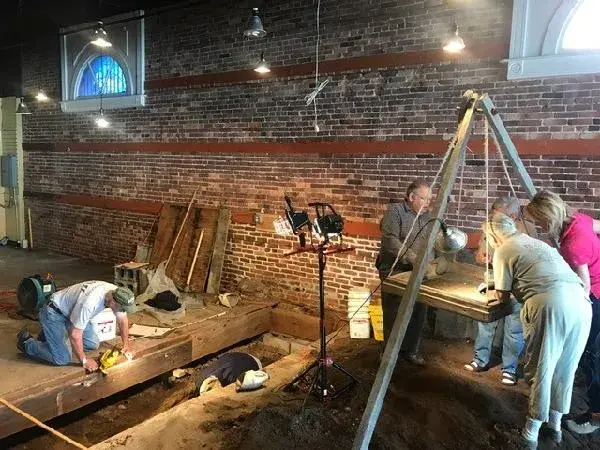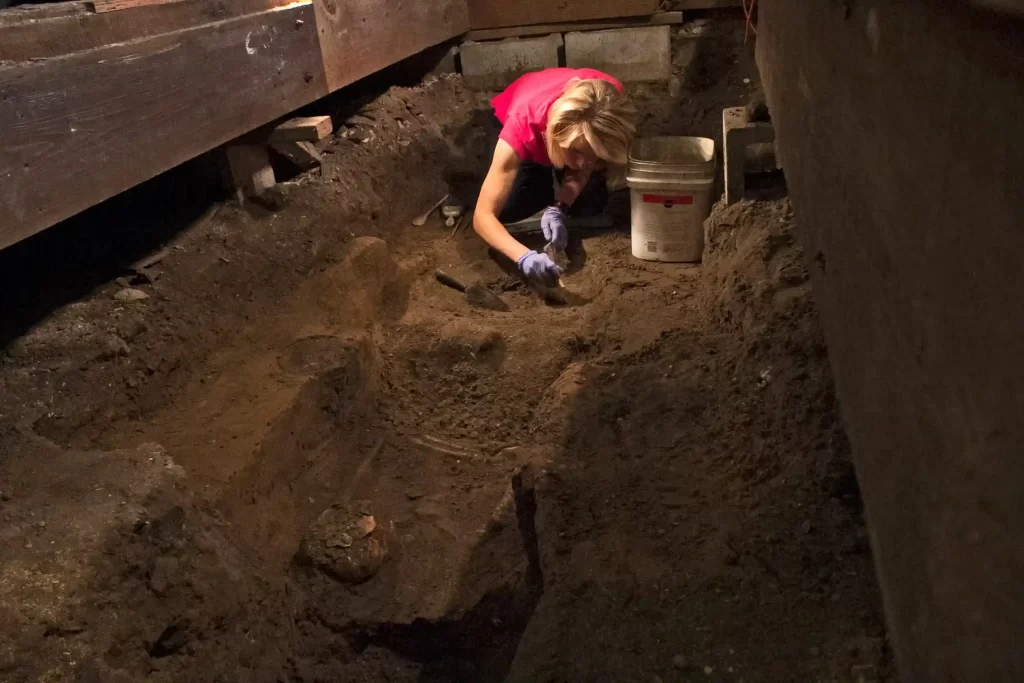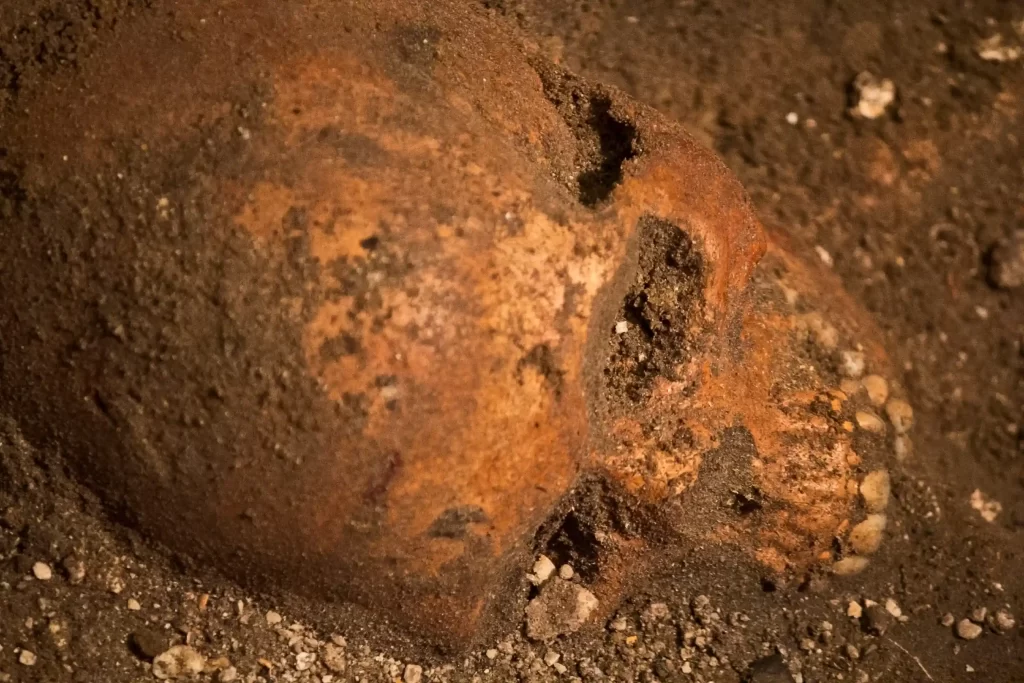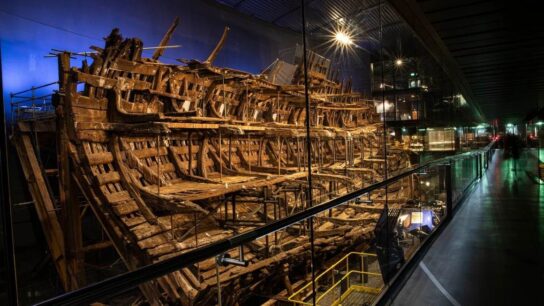Skeletons Found Under a Florida Wine Shop May Be Some of America’s First Colonists

Archaeologists have unearthed human remains under a Florida mall that may be some of the earliest colonists in what would become the United States.
The excavation began this February after David White, owner of the Fiesta Mall in downtown St. Augustine, offered city archaeologist Carl Halbirt a chance to dig under a recently closed wine shop whose floor had been damaged by Hurricane Matthew last fall.
They quickly found a human bone, a right elbow, and further excavation found that it belonged to an articulated and complete skeleton. A second skull was found near the skull of the intact skeleton. Meanwhile, digging just outside the building unearthed a leg and a skull from two different individuals.

Carl Halbirt believes they were buried inside the Church of Nuestra Senora de los Remedios, the earliest documented parish church in the United States. The 2010 excavation of a parking lot a block west of the Fiesta Mall discovered a builder’s trench and the back wall of the church.
The front of the church faced the bay, just like the mall building does today. The 1888 structure is a National Historic landmark today, but it’s just the latest in a long line of different buildings constructed around the St. Augustine’s historic Plaza area, the central green characteristic of Spanish urban design.
The plaza served as community’s meeting ground and recreational area, and would be ringed with important civic, religious and military buildings.
The plaza and Nuestra Senora de los Remedios were built in the same year: 1572, seven years after the founding of the city by conquistador Pedro Menéndez de Avilés.
The first church of Nuestra Senora de los Remedios was burned down in 1586 by Sir Francis Drake. Queen Elizabeth had sent him to raid Spanish holdings in the Old World and New.
England’s support of the Dutch rebellion against Spain had been made official in the Treaty of Nonsuch in 1585, and Philip II retaliated by seizing English merchant vessels in Spanish waters.
While he began the naval build-up that would lead to the Spanish Armada’s miserably failed attempt to invade Britain three years later, Elizabeth sent her privateers to harry Spanish shipping and holdings.
Drake did quite the round trip: England to Vigo in Galicia (sacked), to Baiona (sacked), to Santiago, Cape Verde (sacked), across the Atlanta to Santo Domingo, modern-day Dominican Republic (sacked), to Cartagena de Indias, modern-day Colombia (sacked). Last on his hit list was St. Augustine, sacked on June 6th, 1586. After that, he sailed up to Roanoke, picked up all the original colonists and returned to England.


Neustra Senora de los Remedios was rebuilt in 1587. That one burned down too, in 1599, although apparently it was an accident the second time around.
The hurricane took what the fire did not. The church was rebuilt one more time before the British burned it and the city of St. Augustine to the ground in 1702.
After the third fatality, Nuestra Senora was not resurrected. The parish moved to a new church and the location of Nuestra Senora de los Remedios was forgotten until its archaeological remains were rediscovered under that parking lot in 2010.
The pottery sherds found near the skeletal remains stylistically date to 1572-1586, so to the time of the first church in the 20 years after the founding of the city.
The deceased were likely interred under the floor of the church, a common practice in mission churches of the colonial period. As time passed, it could be a tight fit under a modest church floor.
The excavation has now unearthed at seven more burials in a compact area about 12 by six feet. Three of the burials are of children.
“We’ve mapped some of the particular bones,” [archaeologist Kathleen] Deagan pointed to some round circles she said indicated skulls. She says two of the children found were buried in the same pit, possibly at the same time.
“The bio-archaeologist will be able to tell us the precise age but he thinks — based on the bones — they probably are under 7 years old,” Deagan said.
It was not unusual for children to die so young. “When you look at the parish registers of St. Augustine, children died at a much higher rate than they do today,” Deagan explained.
Researchers will need permission from the state of Florida and the Catholic Church to do any further testing, like collecting DNA from the bones.
Out of respect for the remains and the consecrated ground they were once in, the skeletal remains found under the floor will remain where they were buried. They will not be removed. The bones found outside the building will be reburied in a Catholic cemetery because the city is running a water line through the area.




